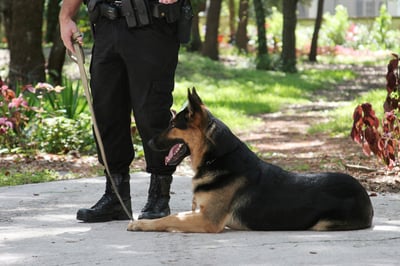
The number of drug overdose deaths in Ohio tripled during little more than a decade, reaching 16.1 per 100,000 in 2013. The drug problem has spurred new laws and an increased emphasis on arrests for drug trafficking and possession. Unfortunately, Ohio’s efforts to control the problem may result in infringing people’s constitutional rights.
Drug-sniffing dogs are routinely used in Ohio traffic stops and often raise questions about their legality and the admissibility of any evidence they bear. The recent U.S. Supreme Court decision in Rodriguez v. United States was encouraging to criminal defense lawyers and civil rights activists, but the ruling has its limits.
In Rodriguez, the defendant was pulled over by police in Nebraska after he swerved his vehicle to avoid a pothole. Although Rodriguez was only issued a written warning, the officer took an extraordinary amount of time conducting the stop. When he handed Rodriguez the ticket, he asked for permission to walk a drug-sniffing dog around his vehicle.
Rodriguez declined to give consent and the officer called for backup. He took his dog around the vehicle and it indicated drugs were present. Law enforcement found methamphetamine in his vehicle.
Rodriguez eventually contested that the evidence was gathered illegally and the Supreme Court agreed. The Court’s reasoning was that the traffic stop was unreasonably long in this situation and drug-sniffing dogs are not part of an officer’s “traffic mission.”
Although Rodriguez was a crucial decision for pushing back on law enforcement efforts that infringe constitutional rights, police still push the boundaries of the law to make drug arrests. Police officers often take unlawful actions during traffic stops and arrests, but K9 drug sniffs not necessarily unconstitutional. Each arrest is different and requires careful examination by an experienced drug defense attorney.

